In the ever-evolving landscape of the digital workplace, where screens dominate our daily existence, the need for resilience has never been more apparent. I’ve witnessed firsthand the challenges that professionals face in maintaining a healthy work-life-tech balance. In this blog, I aim to provide practical tips, strategies, and fun exercises to help you navigate the digital deluge and foster resilience in the digital workplace.
Understanding the Challenge: Digital Overload

The constant influx of emails, notifications, constant instant messaging and virtual meetings can lead to information overload, affecting our productivity and well-being. To combat this, consider implementing the following practices:
- Set Boundaries: If you work from home, define clear boundaries for work hours and stick to them. Establish a designated workspace to create a physical separation between work and personal life. Even think about walking out the front door, around the block and coming back in and sitting at your workspace.
- Prioritise Tasks: Use task management tools to prioritise your workload. Get a balance between focusing on high-priority tasks first, and breaking larger projects into smaller, more manageable chunks. Sometimes it is easier to manage quick tasks first thing in the morning. I find I do my admin in the morning first thing and spend the afternoon with time set aside for the larger project work. I focus better in the afternoon. When is your focus time? Are you an early bird or a night owl?
- Digital Detox: Designate specific times for a digital detox. Turn off notifications during breaks and non-working hours to reclaim your mental space. This is particularly important when you are on leave. With email on mobile phones, it is very tempting to “Just have a quick check”.
Building Resilience Through Mindful Practices
Resilience is not just about enduring challenges; it’s about bouncing back stronger. Incorporate the following mindful practices into your routine to build resilience:
- Mindful Breathing: Take short breaks throughout the day for mindful breathing exercises. Deep, intentional breaths can help reduce stress and improve focus.
- Gratitude Journaling: Maintain a gratitude journal to shift your focus from challenges to positive aspects of your life. Reflect on achievements, no matter how small, to foster a positive mindset. What are your wins for the day? Focusing on the positives will help motivate you and keep you going.

- Visual Breaks: Integrate short visual breaks into your day. Set a timer to remind yourself to look away from the screen, stretch, and refocus your eyes.
- Try the Pomodoro technique, working in 25-minute sprints. Set a timer to remind you to take a mini break.
- Or my personal favourite, Ultradian intervals, 90 minutes of ultra focussed work and then a decent break. At least 15 minutes.
- Eye cupping also helps relax the eyes. It also relaxes your eyes when they feel tired.
- Start by cupping your hands over the sockets of your closed eyes. Stare into the far back of the dark space. You will notice that the various residual hues in your vision slowly turn to black.
- Do this simple exercise for a minimum of 30 seconds. It serves as a reset button for your vision and freshens your eyes.
I prefer the ultradian intervals as I can immerse myself in what I am doing. I find I focus better in longer timeframes. For me, the Pomodoro is too short and I lose the thread. However, if I am doing admin-type tasks then the Pomodoro is my go-to.
Digital Harmony: Tips for a Healthy Balance
- Scheduled Screen Breaks: Plan regular screen breaks to prevent eye strain and mental fatigue. Use the 20-20-20 rule: every 20 minutes, look at something 20 feet away for at least 20 seconds.
- Utilise Productivity Tools: Leverage productivity tools to streamline tasks and reduce the time spent on digital devices. Tools like task managers, calendar apps, and project management platforms, electronic To Do Lists to help keep things straight, can enhance efficiency.
- Create Tech-Free Zones: Designate certain areas of your home as tech-free zones. This could be your dining area or bedroom, allowing you to disconnect and unwind. My bedroom has been a tech-free zone since we moved in 2021. I am convinced I sleep better as a result.
Fun Exercises to Recharge Your Mind
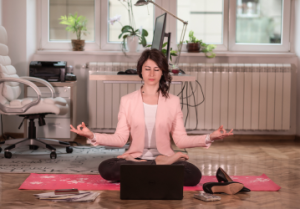
- Desk Yoga: Incorporate simple yoga stretches into your work routine. Stretch your arms, neck, and back to alleviate tension and promote physical well-being.
- Virtual Team-Building Games: Organise virtual team-building activities to foster camaraderie. Games like online trivia or virtual escape rooms can provide a welcome break from work-related stress.
- Laugh Break: Watch a funny video or read a joke to induce laughter. Laughter has proven benefits for reducing stress and improving mood.
- Digital Downtime Challenge: Challenge yourself to a digital downtime day at the weekend, or whatever day you don’t work. Disconnect from all screens and engage in activities you enjoy, whether it’s reading a book, taking a nature walk, or trying a new hobby.
Embracing Digital Resilience
In the era of the digital workplace, resilience is the key to maintaining a healthy work-life-tech balance. By implementing these recommended practices and incorporating fun exercises into your routine, you can foster a resilient mindset and navigate the challenges of the digital age with confidence.
Remember, it’s not about eliminating technology from our lives but about creating a harmonious relationship with it. Embrace the power of resilience, prioritise your well-being, and find joy in balancing the digital and the analogue. Your journey to digital resilience starts now!

 For health management, it is important to understand the physical responses triggered by the body when subjected to stressors. Notably, the release of hormones, namely adrenaline and cortisol, is a fundamental element of the stress response. This response mobilises energy by increasing blood glucose levels, preparing the individual for a fight-or-flight situation.
For health management, it is important to understand the physical responses triggered by the body when subjected to stressors. Notably, the release of hormones, namely adrenaline and cortisol, is a fundamental element of the stress response. This response mobilises energy by increasing blood glucose levels, preparing the individual for a fight-or-flight situation. digestive processes. Persistent stressors can precipitate gut disorders, including constipation, diarrhoea, and indigestion. Prolonged exposure to chronic stress carries the potential to instigate severe gut conditions, such as irritable bowel syndrome and other related disorders. This underscores the intricate relationship between stress, cortisol, and the multifaceted nature of gut health.
digestive processes. Persistent stressors can precipitate gut disorders, including constipation, diarrhoea, and indigestion. Prolonged exposure to chronic stress carries the potential to instigate severe gut conditions, such as irritable bowel syndrome and other related disorders. This underscores the intricate relationship between stress, cortisol, and the multifaceted nature of gut health. Wellbeing: Whose responsibility is it?
Wellbeing: Whose responsibility is it?
 Metrics That Matter
Metrics That Matter Well-being is the feeling of being well and being able to take life in your stride. Gallup encapsulated the breakdown of wellbeing in their book “Wellbeing at Work”, breaking it down into 5 key aspects of wellbeing, that I believe, describe the different elements exceptionally well:
Well-being is the feeling of being well and being able to take life in your stride. Gallup encapsulated the breakdown of wellbeing in their book “Wellbeing at Work”, breaking it down into 5 key aspects of wellbeing, that I believe, describe the different elements exceptionally well:
 10 Key tips to Incorporating Well-being into your organisation
10 Key tips to Incorporating Well-being into your organisation When I took up the piano, little did I know the wonderful side effects! It is a great way to improve brain resilience! To keep our brains resilient we need to take care of our brain’s cognitive and emotional health. Keep your brain healthy by stimulating it with activities that challenge it.
When I took up the piano, little did I know the wonderful side effects! It is a great way to improve brain resilience! To keep our brains resilient we need to take care of our brain’s cognitive and emotional health. Keep your brain healthy by stimulating it with activities that challenge it.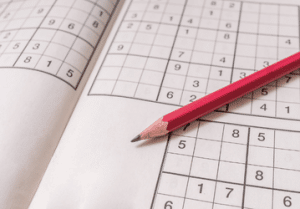 Whether it’s a new language, history, or science topic, keeping your brain active can help you retain information.
Whether it’s a new language, history, or science topic, keeping your brain active can help you retain information. It is a long-established fact that exercise is good for our bodies but what about brain resilience? The evidence is very clear – leading a physically active lifestyle provides benefits for overall health and wellbeing. Studies have repeatedly shown that people who are physically active throughout their lives have a lower-than-average risk of a decline in thinking skills with aging.
It is a long-established fact that exercise is good for our bodies but what about brain resilience? The evidence is very clear – leading a physically active lifestyle provides benefits for overall health and wellbeing. Studies have repeatedly shown that people who are physically active throughout their lives have a lower-than-average risk of a decline in thinking skills with aging.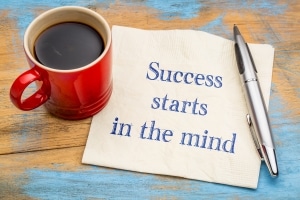 Classes aren’t just a way to pass the time – they can actually help keep your brain active and sharp. If you’re interested in a new hobby or want to improve your job performance, taking classes is a great way to learn new things and keep your mind fresh. With so many options available, you’re sure to find a class that’s perfect for you.
Classes aren’t just a way to pass the time – they can actually help keep your brain active and sharp. If you’re interested in a new hobby or want to improve your job performance, taking classes is a great way to learn new things and keep your mind fresh. With so many options available, you’re sure to find a class that’s perfect for you.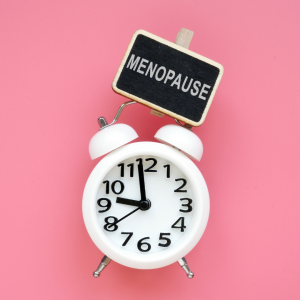 Why are we talking about menopause
Why are we talking about menopause
 What is a curveball?
What is a curveball?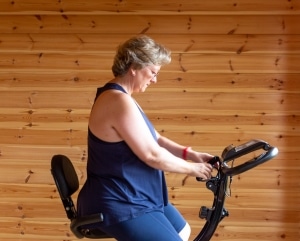 What is High-Intensity Interval Training – HIIT
What is High-Intensity Interval Training – HIIT